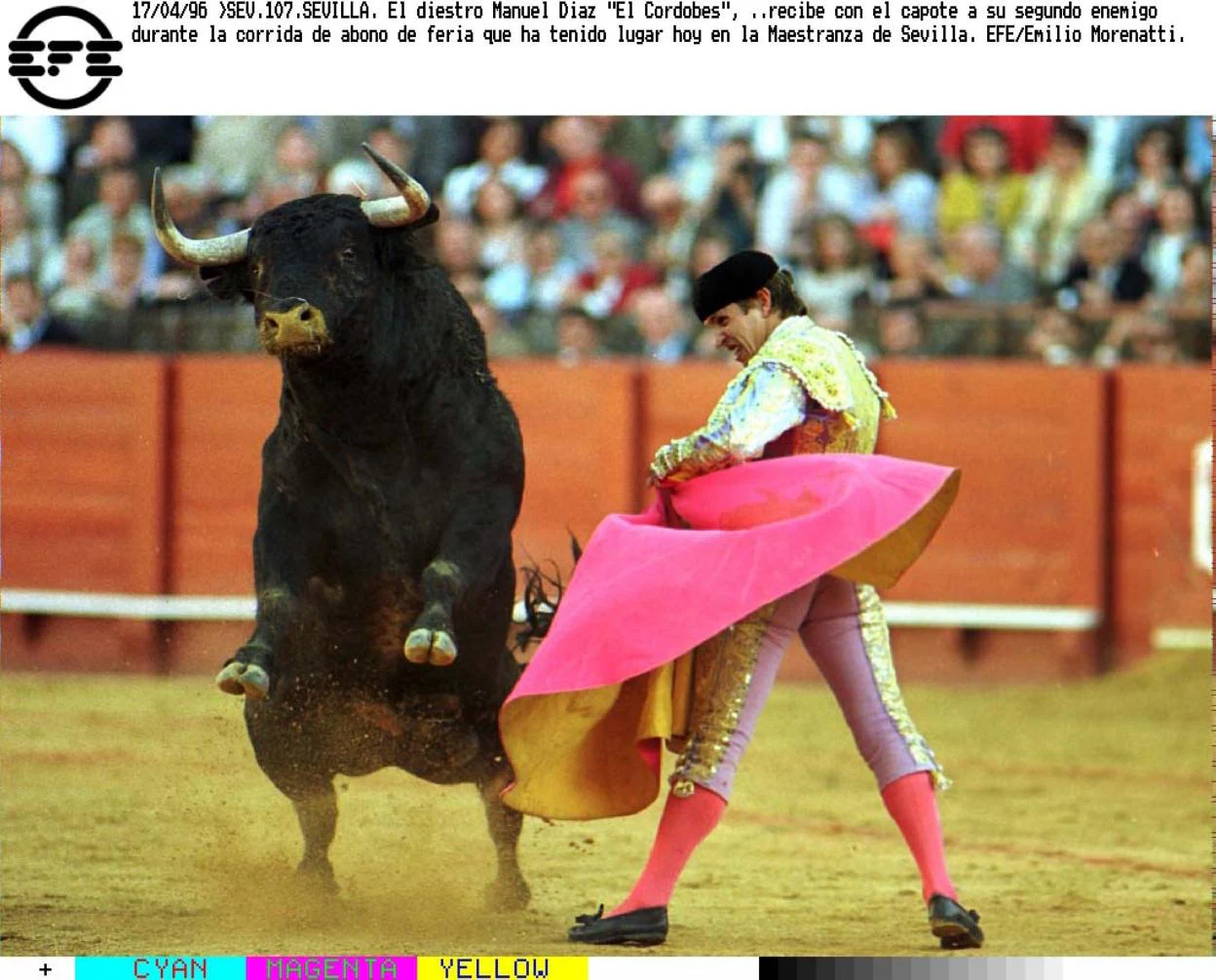Doubts about the bulls
ANALYSIS ·
Pointless destruction, rather than artistry and skill, is a fundamental problem at a 'corrida' and makes bullfighting hard to watchIt's still the worst bullfight I've ever seen. Along with everyone else in the stands, I jeered and booed as a talentless 'torero' jabbed at the base of the bull's head with a dagger, each time causing it to bellow and toss its head.
The bull was bleeding heavily from several wounds, destroyed and unrecognisable from the awesome creature we'd seen at the start. It took these incompetent butchers fifteen minutes to relieve the animal of its suffering. I left the plaza immediately afterwards, long before the end of the bullfight, distraught and full of shame.
That was during the Malaga Feria of 2016 and since then my doubts about the bulls have only increased.
The death of a bull always made me sad, but when it was quick it wasn't too traumatic
I became hooked on the bulls at the age of about ten, after seeing my first 'corrida de toros' in the south of France with my dad (he hated it and never went again).
Aficionado
A passionate 'aficionado' throughout my teens, twenties and early thirties, I attended bullfights throughout Spain and read widely on 'los toros' - Hemingway, of course, but also contemporary British authors such as Alexander Fiske-Harrison and A.L. Kennedy. The latter's On Bullfighting is still the best introduction to the subject in English I know of.
What attracted me most to the bulls as a kid was the contrast between the ferocious movement of the animal and the statuesque - almost suicidal - poise of the man: feet together, body stiffened, rotating on a tight axis.
Photos seemed to capture this singular combination of stillness and motion more than the real thing.
On long summer holidays in the south of France, I'd spend hours copying black-and-white bullfight photos from the newspapers, using felt-tip pens and a grid for scale.
I also loved the bright colours, the old-fashioned pageantry and the brass bands that sometimes accompanied the final ten minutes.
As an animal lover, the death of the bull always made me sad - but when it was quick it wasn't too traumatic. And these bulls, I knew, lived in huge pastures for four years before the 'corrida', only ever encountering humans on horseback.
This was surely better than the cramped, short lives of bovine raised for meat (average age two to three years), lives terminated by supposedly 'humane' murder in an abbatoir.
But if you go to enough bullfights, one fact eventually becomes unavoidable: as A.L Kennedy put it when I interviewed her for this newspaper in 2019 (when my doubts about the bulls were really starting to bite), "unless the matador is wonderful, [the corrida] is not even going to approach an artistry that would begin to excuse a death".
That was the problem with the bullfight described above: it contained nothing that justified, in any way, the bulls' deaths.
Inept butchery
That was the problem with the corrida described above: it contained nothing that justified, in any way, the bulls' deaths. It was pure vandalism. I've seen perhaps a dozen bullfights since that bloodbath six years ago and two or three of them have been good, one great. A couple were awful and the rest mediocre. All of them have featured at least one protracted, messy execution.
Now I am a little more anxious each time I go to a corrida, I need more booze to watch it - because I know there's a good chance I'll see pointless destruction instead of art. This is the fundamental problem, because if the bullfight (and it's a big 'if') is only justified when the toreros show great artistry and kill swiftly, what is it the rest of the time, most of the time? And are the good ones enough to make up for all the others, in which the bulls' free and wild lives are spoiled by bad deaths?
I used to think that the sadness and guilt I experienced after a corrida (even a good one) was emotion well spent. It was worth it to see that haunting contrast of the fluid and stationary, sharpened by the imminence of death and the presence of mortal risk for the toreros. Even if you saw art for just a few minutes and the rest was a hard-to-watch disappointment. Not any more.

